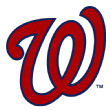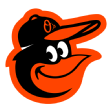The dream scenario for most major league teams is to be a top contender while simultaneously building a top farm system that can meet the short-term and long-term needs of the organization. But as the saying goes, anything that can't go on forever won't, and like the British Empire, the sun has finally set on every great franchise so far in history, leading to down periods of short or long duration.
We talk about the success cycle in baseball not because always competing isn't preferable but because the basic structure of the system puts significant pressure on successful teams. Players get rapidly more expensive as they hit the end of the arbitration years, and you can't always develop the exact player you need to replace that player. At the end of a team's run of excellence, you tend to see teams start to hit Payroll Hell, in which the team's payroll no longer matches its ability to win games and the minor league system is exhausted like an oil well from 1920. For these teams, escaping Payroll Hell will require a lot more than Orpheus with a lyre. Let's look at baseball's Seven Circles, using Baseball-Reference's reckoning for payroll estimates.
 First Circle: Washington Nationals
First Circle: Washington Nationals
The trouble in Washington isn't quite here; we're talking about a team that won 97 games in 2017 and 95 in 2016 and looks to be one of the top contenders in 2018 as well. The Nationals have 12 MLB free agents this winter, and though that sounds like a lot, most of those players are secondary talent or were short-term pickups. Even the biggest name, Jayson Werth, didn't really contribute much to the past two successful Nats teams, and removing the $21 million he made yearly is a lot more helpful than his departure is a hindrance.
There's danger on the horizon, however. Washington's payroll entering 2017 was $165 million. By Baseball-Reference's reckoning, Washington already has $169 million or so baked into the cake for 2018. 2019 is when things start to get scary, when the Nats go from 11 players with guaranteed contracts to four, but they will see that guaranteed money drop by only $33 million. That puts them around $140 million, but with no Bryce Harper, no Daniel Murphy, no Gio Gonzalez, no Matt Wiet ... OK, let's stop at those three. Those three players generated 14 bWAR for the Nationals. Add Anthony Rendon the following year and Stephen Strasburg's opt-out, and the Nats face an uncertain future.
 Second Circle: Toronto Blue Jays
Second Circle: Toronto Blue Jays
Like the Nationals, the Blue Jays aren't in the hottest of fires yet, but they're certainly farther along in their journey, having won only 76 games in 2017. The good news is that the team had a greater-than-average number of things go wrong, which means the Blue Jays are still candidates to have a bounceback season in 2018. The ZiPS projection system continually puts them back in the 80s in wins, without any crazy assumptions like kidnapping Mike Trout at the Winter Meetings.
With the non-tendering of Tom Koehler and Ryan Goins, the current baseline for the Jays is $138 million in 2018. That's without a single improvement for a team that was 15th in the AL in runs scored and has one starting pitcher without a major question mark on the roster (Marcus Stroman). A full year for Aaron Sanchez will help, as will an extra 100-150 plate appearances from a healthy Josh Donaldson, but the team needs a lot more than that. Toronto is rapidly reaching the point where it has to make a commit-or-quit decision and follow through with it, as Donaldson is a free agent after 2018, as is J.A. Happ, and the team is getting quite old.
 Third Circle: San Francisco Giants
Third Circle: San Francisco Giants
San Francisco had a worse season than even the grumpiest Dodger fan might have wished upon it, as the Giants went 64-98 to tie with the Tigers for the worst record in baseball. Perhaps worse yet, keeping this 64-win team together will cost the Giants somewhere in the neighborhood of $180 million.
But things aren't necessarily over in San Francisco. Pretty much every contributor to the 87-win 2016 team is still on the roster, and though it would be unrealistic to project 87 wins based on that, some bounceback remains possible. All of the top three pitchers in the rotation (Bumgarner, Cueto and Samardzija) have better 2018 projections than their 2017 performances, and ZiPS projects the Giants to get to 75 wins with the current roster.
If the team isn't throwing in the towel, it needs to go big with its offseason plans. The front office realizes this, which is why the trade talks around Giancarlo Stanton have gelled around San Francisco. Stanton in San Francisco would get the team back around .500, but it would have to do more. That might be tricky, because assuming the Marlins take Joe Panik in the trade as a partial offset, the $23 million net add for Stanton puts the Giants over $200 million. Picking up Shohei Ohtani would be terrific for the team, given this situation, but failing that, the Giants are in a position in which they need to add another five to eight wins to become interesting, which is not a cheap proposal.
Simply put, the Giants are rapidly reaching the point at which to have a good shot of getting back up to the surface, they might need a larger payroll than the Dodgers in 2018. Team ownership has shown a willingness to invest in the team, but spending that much more is a tall ask.
 Fourth Circle: Seattle Mariners
Fourth Circle: Seattle Mariners
The Mariners opened the 2017 season at $154 million, and with the non-tendering of Drew Smyly, they currently project at $144 million, so the straits aren't necessarily dire at first glance. Their problem is that with that $144 million, ZiPS is currently projecting their current roster to be a 74-win team in 2018.
Let's say the Mariners are successful in bringing in Yu Darvish for six years and $160 million, adding a pitcher to a rotation that sorely needs one due to injuries and the apparent dethroning of King Felix. ZiPS projects 4.1 WAR for Darvish in Seattle in 2018, bringing the Mariners to 78 wins and $170 million or so. Now give them Jake Arrieta and another four wins and $20 million per year (for the sake of argument), and we're getting near $200 million, yet the Mariners are only just reaching .500.
Seattle can make more efficient moves than this, of course, but "rob the other team" is a tricky thing to execute as a plan if the rest of the league isn't being run by Dave Stewart clones. Nor does Seattle have a farm system it can simply add from, like the Red Sox did when trading for Chris Sale. Keith Law ranked the Mariners' farm 28th in baseball last year, and ZiPS thinks that since then they've improved only to 24th.
The M's have a narrower path to escape than the Giants, but it's still at least plausible, even if expensive and uncertain. But as we advance a little deeper, we start to pass the people rolling boulders up hills for eternity and get to the really cruel punishments.
 Fifth Circle: Baltimore Orioles
Fifth Circle: Baltimore Orioles
You know how a lot of contending teams would like to add a top pitcher in free agency? The Orioles look like they're in a position in which they need to add all of them. Starting at $130 million, the Orioles theoretically have more payroll room to be aggressive this offseason, but there has been little indication that owner Peter Angelos has the stomach to push the team anywhere near, say, $180 million, which might be what the O's need to put together a rotation that can make them serious contenders. As of right now, ZiPS projects the Orioles at 29th among rotations in 2018, behind only the White Sox, who really aren't even trying to win next season. In the AL East, the next-worst projected rotation is the Blue Jays', up at 13th overall.
Like the Mariners, the O's do not possess a bevy of prospects to cash in. They likely need to have Chance Sisco on the roster right now, and though Austin Hays moved through the system briskly in 2017 with an OPS over .900, it would still take a lot of throw-ins to land a top starter. Worse, the Orioles likely need more than one.
Time's running out quickly for the O's in that Manny Machado, Zach Britton, Brad Brach and Adam Jones, most of the players on the team who would have value in a rebuilding trade, hit free agency after the 2018 season. Baltimore's window for contention and window to jump-start a rebuild are both very narrow. The team is at risk of looking like the pre-Jeff Luhnow Astros -- in a tougher division.
 Sixth Circle: Kansas City Royals
Sixth Circle: Kansas City Royals
While not trading their prospective free agents was likely the right thing to do in 2017, given that they were still in realistic contention for one last push at the trade deadline, the Royals' outlook is much bleaker as we head into 2018. Although the team would like to cobble together another 79-win roster that outperforms expectations and somehow wins 86, even that is looking like a tall order when you start at 80 wins and subtract Eric Hosmer, Lorenzo Cain, Mike Moustakas, Jason Vargas and Mike Minor.
ZiPS currently projects the Royals to have the weakest roster in baseball in 2018, beginning the offseason at 69 wins. What's even worse about that is they start the offseason with more than $120 million practically guaranteed, with nine players combining for $101 million of that number. Those players combined for only 5.9 bWAR in 2017.
I don't think the Royals are contenders in 2018, not even if they had a $200 million payroll -- and they won't. The only bit of good news for the franchise is that there seem to be signs from the front office that they're realistic about the challenges they face. And as I learned as a kid watching cartoons, knowing is an impossibly precise half of the battle.
 Seventh Circle: Miami Marlins
Seventh Circle: Miami Marlins
I always figured that my personal Hell would involve Derek Jeter making jump-throws for an eternity while a parade of Gold Gloves is awarded to him. Jeter turned out to be here, surprisingly, as part of a new Marlins ownership group that has spent its initial months attempting to become as vilified locally as two of the team's most infamous previous owners, Wayne Huizenga and Jeffrey Loria.
Every indication is that the Marlins wish to dump Giancarlo Stanton's salary, keep the rest of the team together and see what happens from there. This is doomed to fail. The team has some additional good, young, front-line talent in Christian Yelich and Marcell Ozuna. Those two combined with Stanton gave the Marlins the second-best outfield fWAR in baseball in 2017, behind the Yankees, and the 29th-best outfield since 1992. But it isn't sufficient because it helps get the Marlins only to 77 wins.
Without Stanton, it's hard to envision scenarios in which this team competes. The Marlins needed to add talent even while retaining Stanton's services. Getting an MLB player such as Joe Panik back in a Stanton trade can't possibly fix that. So how would Miami compete in 2018? The farm system can't patch the holes and is unlikely to fetch any win-now players; ZiPS projects the team to have the worst minor league system in baseball in terms of future value. It's going to be difficult to replace Stanton in free agency for the price they're paying Stanton.
But what makes the Marlins the most doomed team in baseball is the poetic Dante-like punishment they receive, in that the very thing they need to do to have the best shot at long-term success is the thing that they cannot do if they're ever to develop a Marlins fan base in Miami: a fire sale. For any other team with the facts on the ground, you'd likely see the team go "Full Astros" and do what teams such as the White Sox have been doing and make a clean sweep. That's a much worse option in Miami after successive fire sales have left the area nearly disinterested in the product.
What crueler fate can await a baseball team than the notion that they could win 100 games and go to the World Series but still have only 20,000 in paid attendance per game, leaving the loudest sound at Marlins Park the infernal gears of their nightmare-inducing home run feature? Whatever else the Marlins trade in trying to escape this level of payroll hell, nobody's taking that off their hands.
